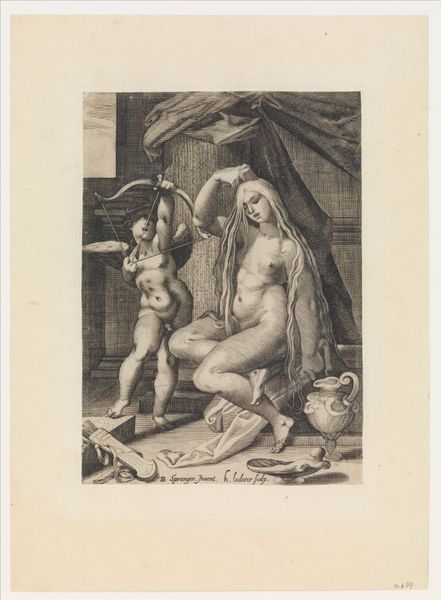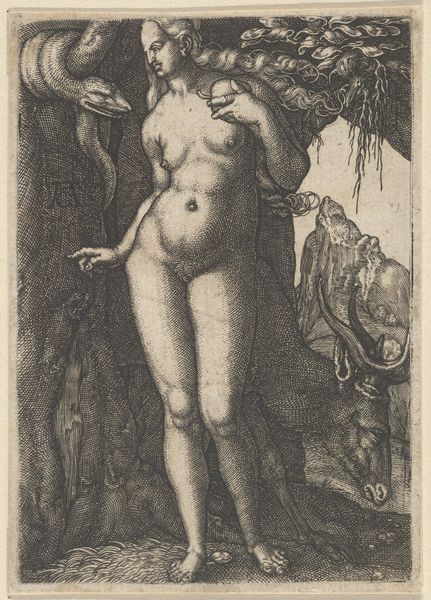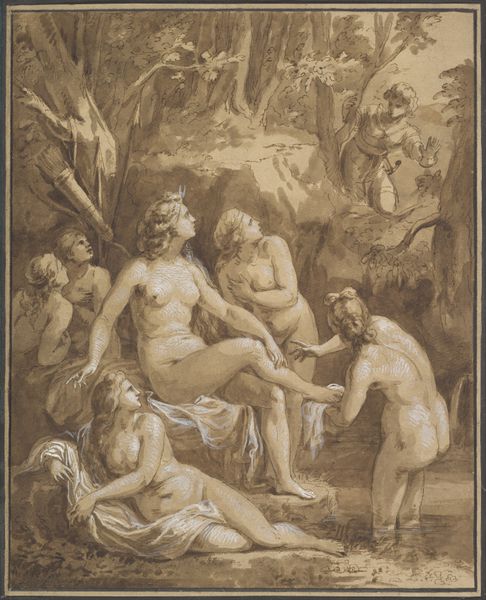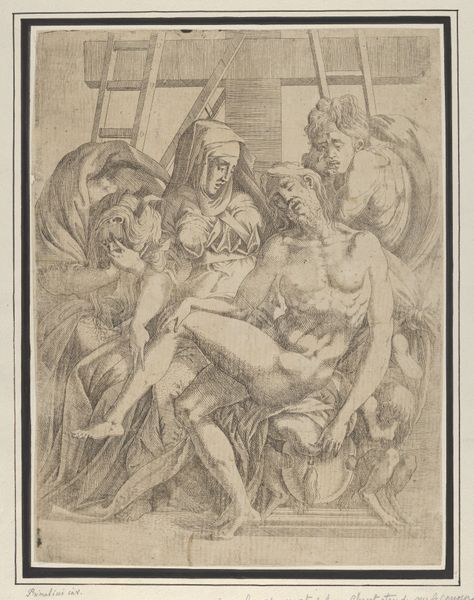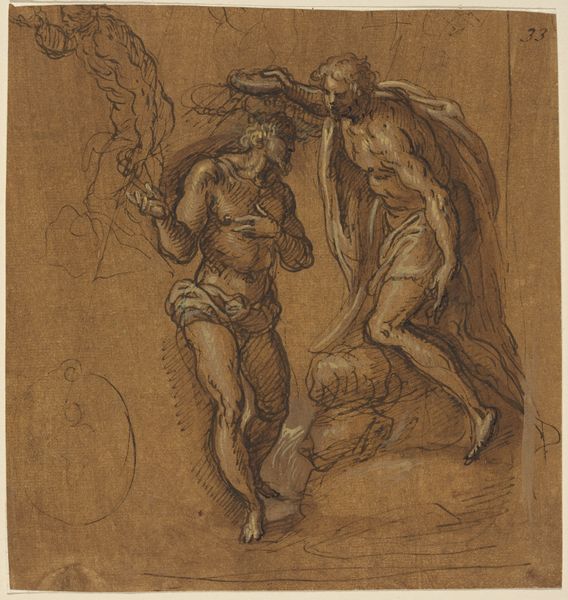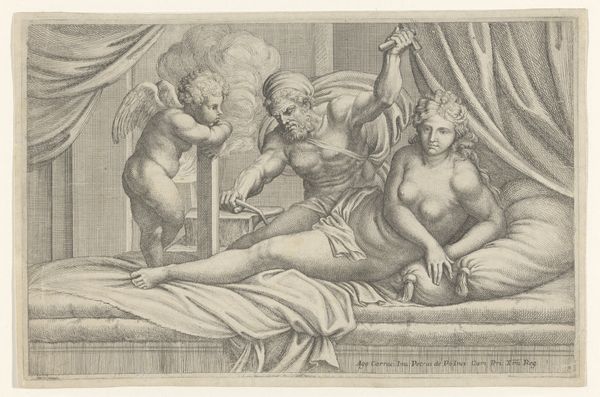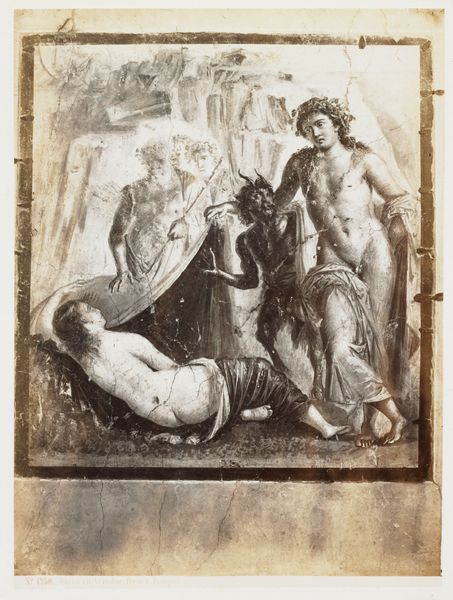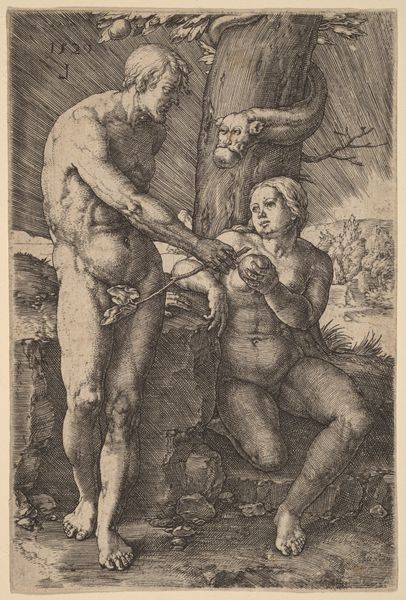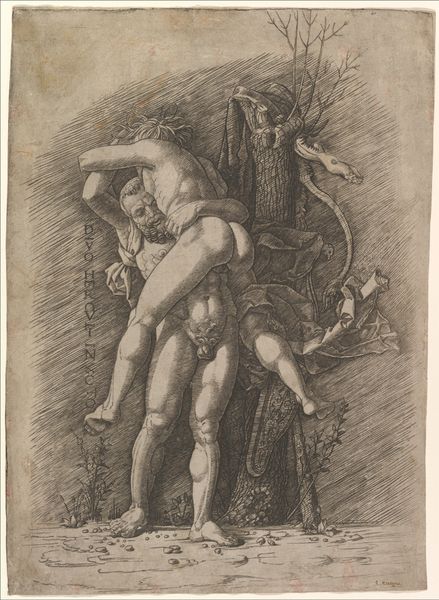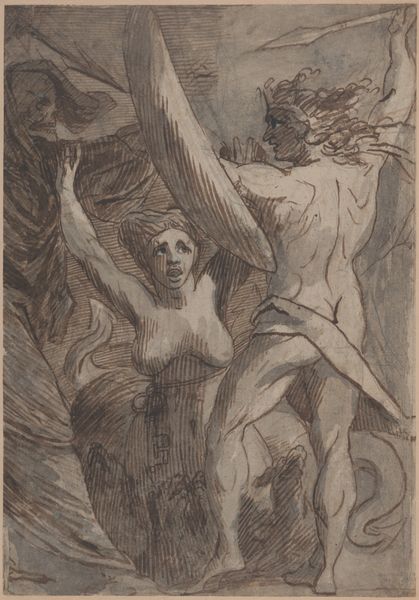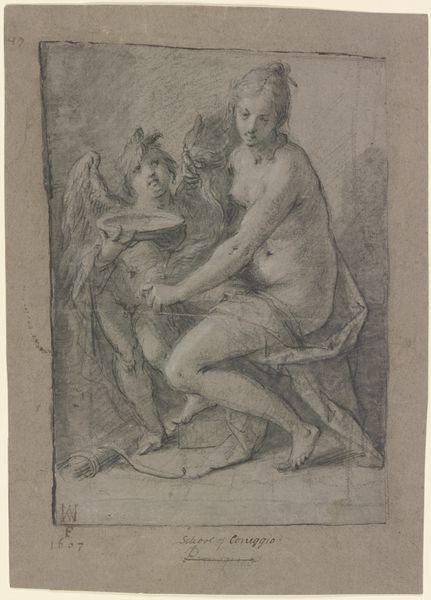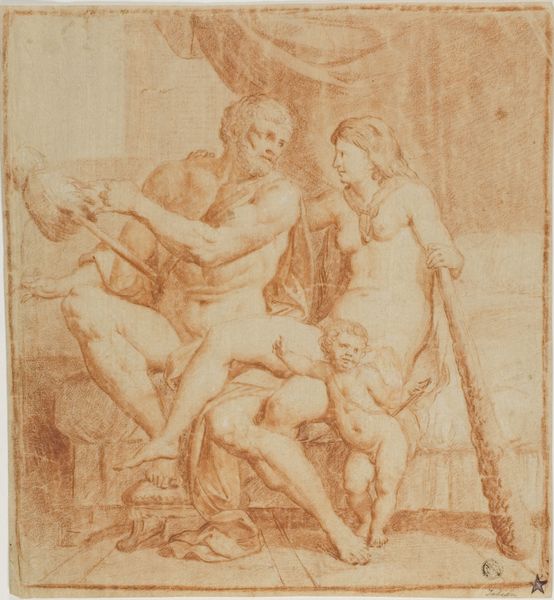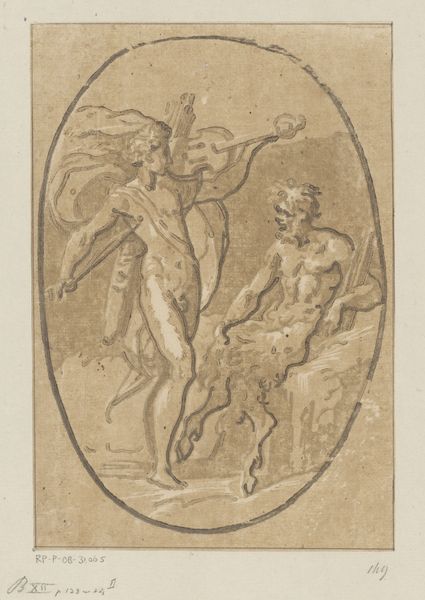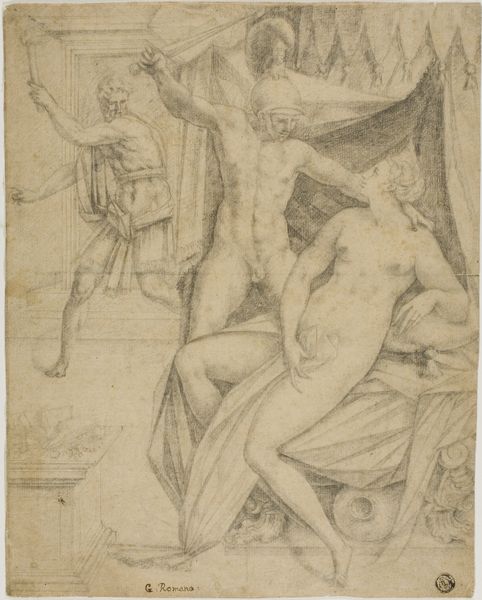
drawing, charcoal
#
drawing
#
allegory
#
charcoal drawing
#
mannerism
#
oil painting
#
charcoal
#
charcoal
#
nude
Copyright: Public domain
Curator: Here we have Bartholomeus Spranger's "Venus and Amor," a charcoal drawing created around 1585. Editor: Immediately, the composition strikes me as unbalanced, unsettling almost. The stark values against the grey paper accentuate the elongated, almost surreal figures. There’s a distinct theatricality. Curator: Absolutely, the Mannerist influence is undeniable. Note the artificiality of the poses, the serpentine lines, and the deliberate distortion of the anatomy all contribute to a sense of artifice and elegance, moving away from the High Renaissance ideals of naturalism. Editor: It makes you wonder about Spranger's method. You see these preparatory sketches – perhaps charcoal was his medium of exploration. These quick studies capturing his thought processes before moving onto the canvas with paint. The quality of charcoal and paper greatly influenced how quickly he would have gotten such dramatic results. Curator: Precisely. The monochrome palette intensifies our focus on form and design. Think about how Spranger uses the cross-hatching technique to build up shadow and volume, creating depth in the drapery and musculature of Venus and Cupid. Consider too the relationship between these two figures. Venus almost seems burdened with some emotional state or feeling— detached from the active Cupid taking aim. Editor: Considering Spranger's move to Prague and his status as court artist for Rudolf II – these types of sketches would have aided him when it came time to plan his lavish artworks, managing workshop staff, buying pigment, or collaborating with other craftsmen in Rudolph's court to render this allegory into a sculpture or fresco. Curator: A crucial point to contextualize. The intellectual milieu of Rudolf’s court absolutely fueled the esoteric symbolism inherent in Spranger’s work, like a fusion of classical mythology, allegory, and even Hermetic philosophy. It's far more than just a charming scene; it encapsulates broader notions of love, beauty, and perhaps even the burdens that come with divine status. Editor: Indeed. The drawing's materiality reminds us that this wasn't some instantaneous act of creation, but a meticulous process reflecting Spranger’s social context and the cultural values of his patrons, the charcoal and paper being the primary elements in this exchange. Curator: I am especially struck by the contrast between Cupid's taut bow, poised with dynamic energy, versus the rather melancholic state of Venus here. It all contributes to the drawing's intrigue, urging deeper thought and questioning beyond its face value. Editor: Seeing his creative practice embedded in materiality grounds what initially seemed detached for me. A powerful reminder to look at both form and conditions.
Comments
No comments
Be the first to comment and join the conversation on the ultimate creative platform.
